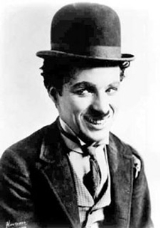
(16 April 1889 25 December 1977) was an English comic actor, film director and composer best known for his work during the silent film
era. He became the most famous film star in the world before the end of World War I. Chaplin used mime
, slapstick
and other visual comedy
routines, and continued well into the era of the talkies, though his films decreased in frequency from the end of the 1920s.
Wars, conflict, it's all business. "One murder makes a villain. Millions a hero". Numbers sanctify.![]()
I am for people. I can't help it.![]()
I remain just one thing, and one thing only — and that is a clown. It places me on a far higher plane than any politician.![]()
I had no idea of the character. But the moment I was dressed, the clothes and the make-up made me feel the person he was. I began to know him, and by the time I walked onto the stage he was fully born.![]()
All I need to make a comedy is a park, a policeman and a pretty girl. ![]()
Friends have asked how I came to engender this American antagonism. My prodigious sin was, and still is, being a non-conformist. Although I am not a Communist I refused to fall in line by hating them. Secondly, I was opposed to the Committee on Un-American Activities — a dishonest phrase to begin with, elastic enough to wrap around the throat and strangle the voice of any American citizen whose honest opinion is a minority of one.![]()
I am what I am: an individual, unique and different, with a lineal history of an ancestral promptings and urgings, a history of dreams, desires, and of special experiences, of all of which I am the sum total.![]()
Life is a beautiful, magnificent thing, even to a jellyfish. ... The trouble is you won't fight. You've given up. But there's something just as inevitable as death. And that's life. Think of the power of the universe — turning the Earth, growing the trees. That's the same power within you — if you'll only have the courage and the will to use it.![]()
You'll never find rainbows if you’re looking down.![]()
I hope we shall abolish war and settle all differences at the conference table... I hope we shall abolish all hydrogen and atom bombs before they abolish us first.![]()

